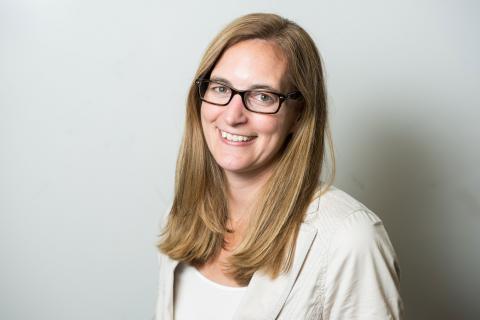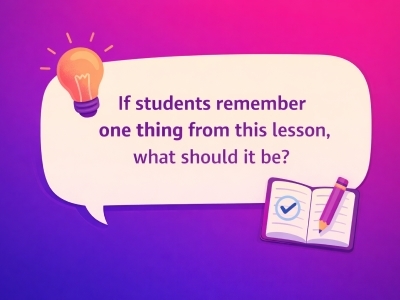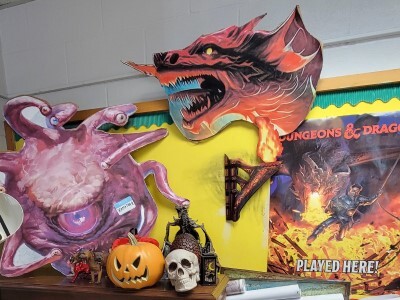Breakthrough Academic and Business Models for K-12 Schools: Resources for Wave IV Applicants
Topics

We’ve all had the experience of truly purposeful, authentic learning and know how valuable it is. Educators are taking the best of what we know about learning, student support, effective instruction, and interpersonal skill-building to completely reimagine schools so that students experience that kind of purposeful learning all day, every day.
Examples of and theoretical and evidence-based perspectives on academic and business modeling for "breakthrough" secondary schools.
Last week, NGLC announced a new wave of funding for planning and launching new “breakthrough” secondary school models. Today, we want to point prospective applicants to a few key resources that offer examples of and theoretical and evidence-based perspectives on breakthrough academic and business modeling.
Examples of Current NGLC Grantee Breakthrough School Models
- Explore the secondary school model designs that were awarded grants under NGLC’s third wave of funding in 2012: read the overview of all 20 models or tour through individual models. Once you find a few that intrigue you, visit their grantee pages on our website for more detailed information about their models, including narrated PowerPoint decks they put together as part of their application.
- At BlendMyLearning.com, NGLC grantees join other blended learning innovators who are blogging about the key issues they are dealing with as they plan and run their blended learning schools. Bloggers post on weekly themes, including data and assessment, the economics of blended learning, and student perspectives. Keeping up with this blog will give you a day-to-day look at what really happens inside these breakthrough model designs.
- The Profiles of Next Generation Learning video series, co-produced by NGLC and the Bill & Melinda Gates Foundation, includes two NGLC breakthrough secondary school model grantees. The videos about Touchstone Education and USC Hybrid High offer rich visual narratives of the vision of these schools in practice and how they function.
Information about Personalized Learning
NGLC uses the term “breakthrough” models to represent the specific design principles for learning: student-centered and student-owned, competency-based, and blended learning. The resources listed here are just a sampling of the current thinking about these principles and how they may lead to dramatically improved outcomes for today’s students.
- Classifying K-12 Blended Learning, Innosight Institute. This white paper helps create a shared language for this emerging field by offering a classification scheme of four models of blended brick-and-mortar and online learning as well as examples within existing schools.
- Blended Learning Implementation Guide, Digital Learning Now! This guide walks school and district leaders through a series of implementation issues around strategy, models, platforms, devices, and more.
- When Success Is the Only Option: Designing Competency-Based Pathways for Next Generation Learning, Nellie Mae Education Foundation and iNACOL. Competency-based pathways are presented as a re-engineering of our education system around learning in which failure is no longer an option. The paper offers a working definition that incorporates three design principles, insights from pockets of innovation, and five challenges that must be addressed when designing competency-based pathways.
- How Digital Learning Contributes to Deeper Learning, Getting Smart. Digital learning promotes deeper learning via (a) personalized skill-building that prepares students for deeper learning; (b) schools and tools that foster deeper learning themselves; and (c) expanded access to quality courses and effective teachers online.
- Connected Learning: An Agenda for Research and Design, Digital Media and Learning Research Hub. Connected learning advocates for broadened access to learning that is socially embedded, interest-driven, and oriented toward educational, economic, or political opportunity. This report offers a design and reform agenda grounded in a rich understanding of child development and learning.
Information about Next Gen Business Models
At the same time that personalized learning transforms the nature of secondary education, breakthrough models embrace the principle that rethinking resource allocations and staffing models will allow dramatically improved outcomes to be achieved at or below existing public funding levels and can be scaled to meet the level of need. The following resources are also just a sampling of current thinking about the business models that go hand-in-hand with the breakthrough academic models we seek.
- Redesigning Schools to Reach Every Student with Excellent Teachers: A Financial Planning Summary, Public Impact. This brief describes school models that extend the reach of excellent teachers, how those models can generate savings that can be re-purposed, how schools can use those savings, and comparing costs and savings of different school models.
- Getting Down to Dollars and Cents: What Do School Districts Spend to Deliver Student-Centered Learning?, Center for Reinventing Public Education. This report describes funding issues related to student-centered learning approaches: authentic instruction, mastery-based assessment, and real-life learning experiences outside the school walls or school day.
- Innovating Toward Sustainability: How Computer Labs Can Enable New Staffing Structures, and New Savings, Center for Reinventing Public Education. Using real wage and staffing data from each state, this report projects the financial and staffing implications of one innovative school model—the Rocketship lab rotation—to highlight potential impacts on the schooling workforce and total per-student spending.
- Teachers in the Age of Digital Instruction, Thomas B. Fordham Institute. This paper outlines how myriad policies affecting teachers will need to be revamped in an age where digital tools proliferate and improve. The elements of excellent teaching that are most difficult for technology to replace will increasingly differentiate student outcomes and teacher effectiveness may matter even more than it does today.
A Framework for Next Generation Learning
In a white paper entitled Next Generation Learning: The Pathway to Possibility, NGLC laid out its perspective on what next generation learning is and what is required for next generation learning to help more students attain better outcomes more affordably. The paper organizes foundational literature, required elements in the framework, and practice examples around six dimensions of goal-setting and measurement, design and implementation, and the active support of systems and environments that surround truly personalized learning.
These resources provided above were identified by our staff as likely to be most helpful to applicants. Hopefully these resources will help you ask the right questions about designing and implementing a breakthrough school model that works for your community and your students. You can always browse through our collection of K-12 resources relevant to next generation learning if you are hungry for more information.
For more details about the application process, please refer to the Request For Proposals, the Wave IV Grant Announcement, or contact NGLC’s K-12 Program Officer Sarah Luchs. We look forward to seeing the creative, sustainable, and tech-enabled models that you develop!




